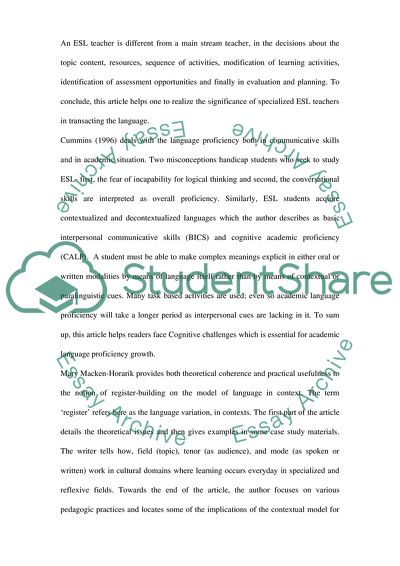Cite this document
(“English as a Second Language to the Learners Essay - 1”, n.d.)
Retrieved from https://studentshare.org/education/1567042-order
Retrieved from https://studentshare.org/education/1567042-order
(English As a Second Language to the Learners Essay - 1)
https://studentshare.org/education/1567042-order.
https://studentshare.org/education/1567042-order.
“English As a Second Language to the Learners Essay - 1”, n.d. https://studentshare.org/education/1567042-order.


